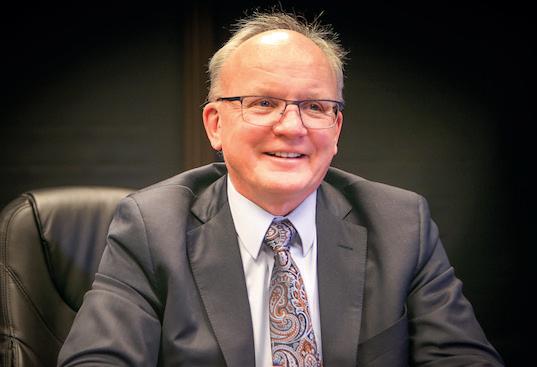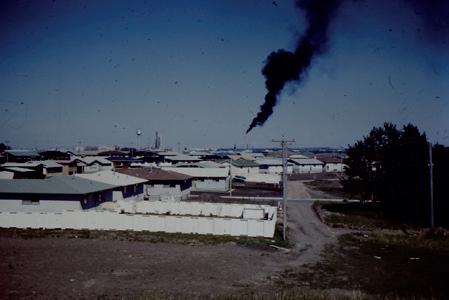
5 minute read
Welcome
Ihave spent 40 years looking at technical data sets and forecasting models in detail. What I have learned is that science is humbling as most ideas turn out to be wrong and each of us is looking at the world with a bias whether you think you are or not. We should be careful and cautious on how we adapt towards our energy future. The world needs energy, especially reliable low-cost energy for everyone. We must make sure that what we are doing is right.
We want to reduce our emissions as much as possible, minimize our operating footprint and become more efficient. Westbrick will do this by meeting or exceeding all government regulations (Alberta has some of the most stringent in the world) and continuously challenge ourselves in the planning, execution and operation of our programs. We will not compromise safety or the environment.
Advertisement
Westbrick is proudly Albertan. All our operations are exclusively in Alberta and much of our team, including our Board of Directors, employees, contractors and consultants, are Albertans.
Albertan’s livelihoods have long been tied to the energy industry and we all have a responsibility to our communities and their economic, environmental and social wellbeing. At Westbrick, we are similar: our team all have responsibility and direct influence on how we work, our culture and our future. Our ESG reports are developed to share our values and to measure our progress beyond financial measures. We can’t undermine the importance of financial success – Westbrick is a business and without generating profits we would not exist. We see strong ESG performance as a part of our operational and financial success. Operational, financial and ESG achievements are inherently linked and are all part of building long-term value.
This year’s ESG report will focus on Westbrick’s people. Afterall it is our team that set goals, execute programs and determine outcomes. Each one of us is responsible for doing our part with within the values we have established as a team. Our ESG performance is an essential component of how we develop value for our communities, our team and our investors.
We all know that 2020 was a tough year. But Westbrick can and will continue to grow and lead. We can continue to build trust, inspire confidence as well as be proud of our work and what we have accomplished. We can continue to improve everyday – how we practically work today will build what we can achieve in the future. That is why Westbrick will focus on the present, the here and now. Today our communities need safe, reliable and affordable energy and the quality jobs that our industry provides. Westbrick has been able to support these needs despite 2020s challenges and we will continue to strive to build a financially-strong and responsible business for Albertans.
Throughout this report, we provide quotes from our people to illustrate how we think about ESG in conducting ourselves in our day to day activities. The way we think about ESG is part of our culture.
Thank you to the employees, contractors, consultants, families, communities and investors of Westbrick
I grew up on the east side of Edmonton, Alberta during the 1960s. Our house was located adjacent to the large Strathcona industrial complex because that is where the jobs were. Upsets at the refinery were common and the plant would go to flare. My mother still lives in the area and I can’t say I have seen the plant go to flare in the last 20 years. It is a reminder of how much things have changed for the positive in our industry.

Climate change was a reality growing up in the 1960s. When it rained in the middle of winter, we got to play street hockey with our skates on.

Understanding, measuring and reducing our emissions is a top priority for Westbrick. This involves much more than meeting today’s regulatory expectations, we look further ahead for technological, regulatory and market changes that will make us more efficient in the future.
OAirur emissions management is important for reducing environmental impacts as well as reducing waste and lost revenue; it makes operational and financial sense to keep everything we produce “in the pipe.” In 2020, we implemented several targeted emissions reduction initiatives. We focused on improving our measurement of emissions, developing creative ways to enhance the efficiency of our operations and using technology to reduce and change how we manage emissions.
How we reduced emissions
Some of the initiatives we undertook this year included:
• Testing new wells down flow lines: Gas produced during post frac well clean-up and testing operations is often flared. In 2019 we conserved 35% of this gas. In 2020 we increased our conservation efforts to capture 70% of the gas; helping to eliminate flaring as much as possible.
In Your Westbrick Words
“I feel we are heading in the right direction to make us more efficient with less emissions.”
“It is very important to me that Westbrick is taking the lead and embracing innovation.”
“We’ve incorporated using fuel gas as a bi-fuel to support our drilling and completions operations which displaces thousands of litres of diesel each budget cycle.”
• Replacing diesel: This year we focused on powering our drilling rig operations with cleaner fuels; we displaced 144,978 litres of diesel with 125.74 e3m3 of natural gas.
• Reducing Nitrogen Oxides (NOx) emissions: We have improved the management of emissions from our natural gas driven engines through increased monitoring and improved operation of catalytic convertors. Our NOx emissions reduced from 994 tonnes in 2018 to 510 tonnes in 2019.
• Reducing methane emissions: In 2020 we partnered with Blusource Methane to upgrade a significant number of older, inefficient pneumatic devices in services at our wellsites (see case study). Since Westbrick was an early adopter of this innovative technology, we are ahead of the incoming regulations on methane emissions. In 2021 we will further evaluate our emissions and continue to transform our facilities to use instrument air systems, including the conversion of two of our major batteries.
Changing regulatory landscape
In terms of GHG emissions management, the oil and gas industry in Alberta is one of the most highly regulated industries in the world. Comprehensive requirements for measuring and controlling emissions are set out in several regulations, including the Alberta Energy Regulator (AER) Directives 017 and 060.
The Westbrick team work hard to stay at the forefront of the evolving regulatory landscape. Both provincial and federal regulators have introduced many new regulations and reporting requirements over the past several years. Many of these are being “phased in” over time. This results in an environment that is continually evolving. Westbrick has included much of this new data in this Report.
Apples to oranges
The regulatory structure for emissions reporting is evolving and we are evolving too. In this years’ ESG report, Westbrick is reporting its total direct GHG emissions from its operations as per new regulatory requirements. As a result, Westbrick’s GHG quantities have increased significantly this year. The previous numbers only included sources in excess of the federal 10,000 tco2e reporting threshold, and now we are estimating and reporting air emissions for all our production facilities. Changes in measurement, reporting, and monitoring process allow us to more thoroughly understand our emissions with the goal of generating further reduction ideas in the future
At 0.0206 tco2e per boe, our GHG emissions intensity positions us as a leader amongst our North American oil and gas industry peers. Our commitment to pursuing innovative solutions to manage GHG emissions in 2020 has allowed us to maintain low emissions intensity, while increasing our production rates.
For Westbrick, accelerating production and minimizing emissions are not mutually exclusive. In future years, we will continue to use our resources efficiently and implement emissions reduction programs, while scaling up our production in order to meet the energy needs of Albertans and Canadians.
Reducing methane emissions with Bluesource
Since April 2020, Westbrick and Bluesource have partnered to significantly reduce methane emissions from pneumatic controllers. As an early adopter of an innovative high-to-low bleed pneumatic retrofit program, Westbrick will lower emissions and meet new regulations on methane emissions.
During April to October 2020,
We see water as a vital resource, both for our communities in West Central Alberta and for our hydraulic well fracturing operations. Westbrick therefore aims to preserve water and is continuously looking for ways to improve water use efficiency.







